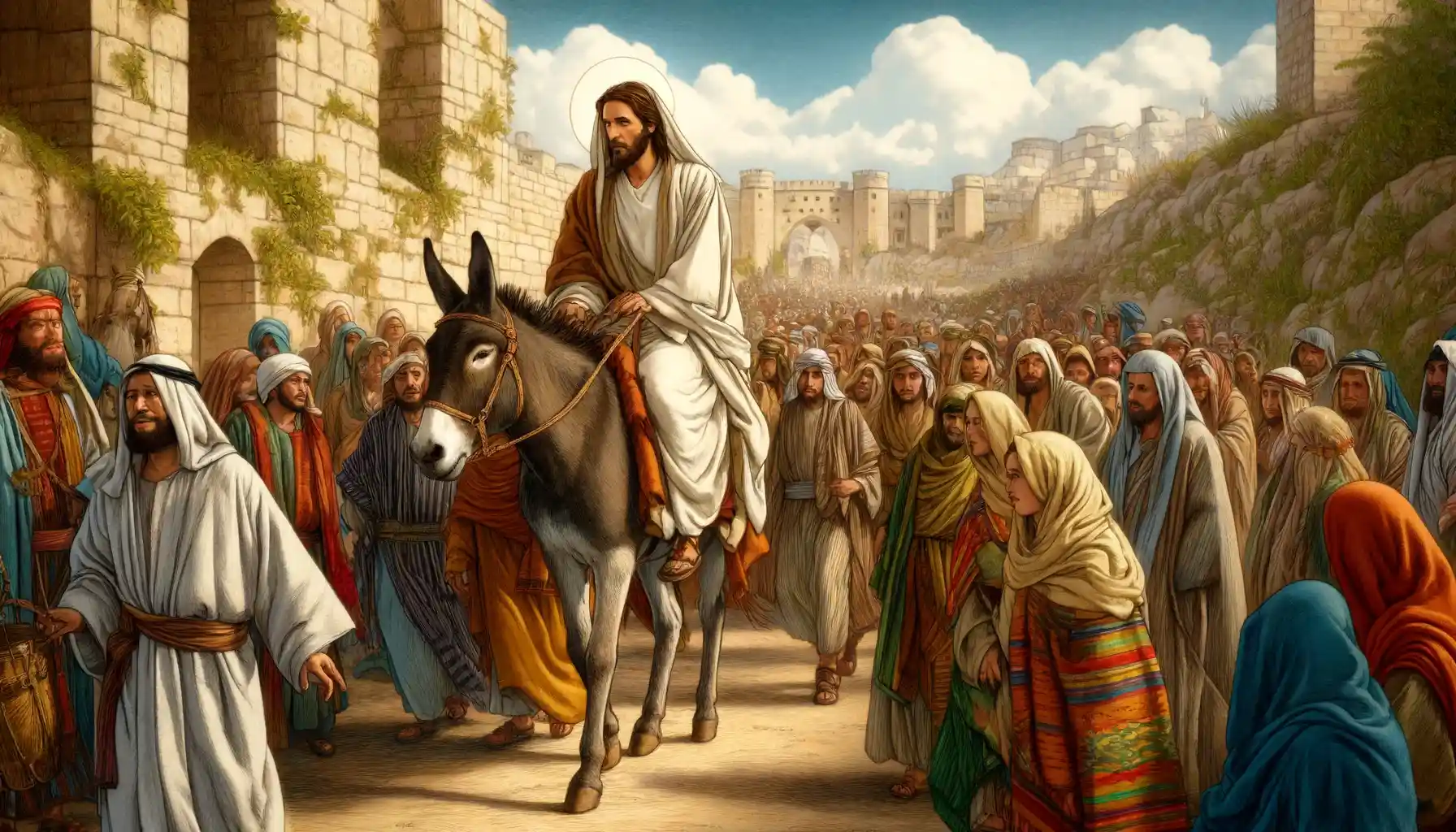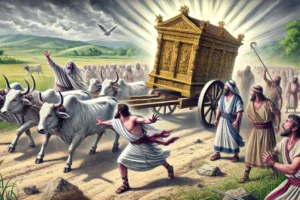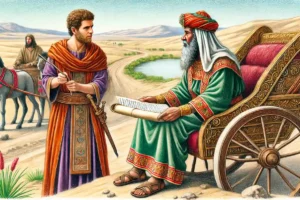
Jesus Entry into Jerusalem on a Donkey
The biblical event of Jesus’ entry into Jerusalem on a donkey, as described in both the Old and New Testaments, serves as a significant fulfillment of prophetic scripture and a pivotal moment in Christian theology. Here are the essential facts about this event:
- Prophetic Foundation: The event was prophesied in Zechariah 9:9, where it states: “Rejoice greatly, Daughter Zion! Shout, Daughter Jerusalem! See, your king comes to you, righteous and victorious, lowly and riding on a donkey, on a colt, the foal of a donkey.” This prophecy highlights the humility and peaceful nature of the Messiah’s kingship.
- Fulfillment in the New Testament: The prophecy is fulfilled in Matthew 21:1-5, which narrates Jesus’ entry into Jerusalem. As Jesus approaches Jerusalem, He instructs His disciples to fetch a donkey and a colt for Him to ride. This act is explicitly connected to Zechariah’s prophecy to underscore that Jesus is the awaited king.
- Symbolism of the Donkey: Riding on a donkey, rather than a horse which was typically associated with war, symbolizes peace and humility. It contrasts with the expectations of a political or military Messiah, highlighting Jesus’ role as a spiritual savior.
- Theological Significance: Jesus’ entry on a donkey symbolizes His peaceful reign and serves as a deliberate fulfillment of prophecy, asserting His messianic identity. This event marks the beginning of Holy Week, a critical week in the Christian liturgical calendar leading up to Jesus’ crucifixion and resurrection.
- Audience Reaction: The crowds responded to Jesus’ entry by spreading their cloaks and branches on the road and shouting “Hosanna to the Son of David!” (Matthew 21:9). This acclamation acknowledges Jesus as the descendant of David, recognized as the Messiah.
The event of Jesus’ entry into Jerusalem, commonly referred to as the Triumphal Entry, encapsulates multiple layers of theological, prophetic, and historical significance within the Christian narrative. This analysis will explore these dimensions in greater depth, particularly focusing on the fulfillment of prophecy from Zechariah 9:9 as recounted in Matthew 21:1-5.
Prophetic Context and Fulfillment
Zechariah 9:9 paints a vivid picture of a coming king who embodies humility and peace, contrasting sharply with contemporary expectations of a militaristic messiah who would liberate Israel from Roman rule. This prophecy not only anticipates a different kind of kingdom but also a different kind of king—one who rules with justice and humility. When Jesus enters Jerusalem on a donkey, He explicitly aligns Himself with this prophecy, signaling His messianic identity and the nature of His mission.
The choice of a donkey, rather than a horse—a symbol of war and conquest in ancient cultures—emphasizes the peaceful intent of Jesus’ kingship. The donkey signifies servitude and peace, aligning with the broader themes of Jesus’s teachings which prioritize spiritual kingdom over earthly power.
Matthew’s Gospel and Symbolism
Matthew, writing for a predominantly Jewish audience, takes special care to highlight how Jesus’ actions fulfill Hebrew prophecies. By instructing the disciples to procure a donkey and a colt, and explicitly connecting this act to Zechariah’s prophecy, Matthew underscores the divinely orchestrated nature of these events. This not only asserts Jesus’ divine authority but also challenges the existing perceptions of the Messiah among the Jewish people at the time.
Theological Implications
Jesus’ method of entry into Jerusalem serves multiple theological purposes:
- Kingship and Humility: It declares His kingship while redefining it through the lens of humility and service, rather than power and domination.
- Peaceful Messiah: It positions Jesus as a peaceful messiah, countering the prevalent Jewish expectation of a warrior king who would overthrow Roman rule.
- Divine Plan: It affirms the divine plan and Jesus’ obedience to it, setting the stage for the events of Holy Week.
Crowd’s Response and Its Significance
The response of the crowd, who shout “Hosanna to the Son of David!” and spread their cloaks and branches on the road, is charged with messianic expectation. The term “Hosanna” originally a plea for salvation, had become a shout of jubilation; it acknowledges Jesus as the descendant of David, whom they hope will fulfill the roles of king and deliverer.
This public acclamation is significant because it shows a moment of public recognition of Jesus’ messianic status, which is pivotal for the narrative of Holy Week. It also highlights a popular, though misunderstood, expectation of His role and mission.
Conclusion
The entry into Jerusalem thus serves as a critical fulcrum in the Gospel narratives, rich in symbolic actions that communicate Jesus’ identity and mission. This event is not merely a historical recounting but a profound theological statement about the nature of Jesus’ kingship, the essence of His mission, and the unfolding of God’s redemptive plan for humanity. Through this lens, we see a deliberate move from Jesus to align Himself with Zechariah’s prophetic vision, setting Himself apart from secular power and emphasizing the spiritual and salvific aspects of His work.
Tag:biblical kingship, crowd reaction, divine orchestration, donkey symbolism, Holy Week, Hosanna to the Son of David, Jesus' entry into Jerusalem, Jewish expectations of Messiah, Matthew 21:1-5, Messianic prophecy, Palm Sunday, peaceful Messiah, prophecy fulfillment, spiritual kingdom, Theological Significance, Triumphal Entry, Zechariah 9:9



